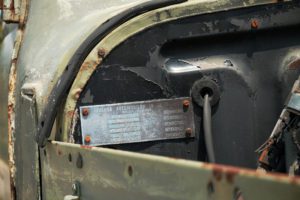Direct Part Marking 101 | Part Marking Specifications for Defense and Military

Direct Part Marking (DPM) is a process utilized by various manufacturers to improve the traceability for the parts they create, and also to cut down on data entry errors and issues related to safety, warranty, and liability.
For defense and military applications, part marking specifications streamline the process of identifying parts throughout the manufacturing process; and in the event of any potential safety or liability issues, using 2D codes etched/imprinted directly on the part to expedite the process. DPM also facilitates the satisfaction of regulatory requirements related to identifying stolen parts and makes it easier to identify counterfeit parts.
Manufacturing for the defense and military industry requires
- accuracy
- permanency of the identifier’s application
- readability of the code at any point in the component’s life cycle
- guarantee of unique IDs marked for each part.
The simple operation, with effective maintenance procedures, is also key in meeting the required standards for defense and military products.
Direct Part Marking for Defense and Military Applications
Nearly every component in military vehicles, tanks, and fighter jets requires DPM for effective marking of all components involved.

To manufacture these modes of transport for soldiers who may be in combat situations, the most accurate and traceable manufacturing processes must be utilized.
Other areas where DPM is crucial include both ammunition and firearm production. Laser Marking has been recently added to dot peen marking, chemical etching, and other metal marking processes as an acceptable method of DPM for defense applications.
Laser marking is more cost-effective, reduces waste, and increases speed and accuracy in the part marking process.
Item Unique Identification (IUID) is a process implemented globally to distinguish items – particularly those purchased by the Department of Defense. The management process provides the DoD access to the part’s location, and value wherever it is located and at any time during the product’s life cycle. This program is known as Serialized Item Management (SIM).
The IUID Army designation allows the military branch to specify products needed by that branch. To facilitate this process, a DPM Code is issued for each product manufactured, and that unique code can be read via special DPM Laser scanners created for the task.
Dot peen marking is another type of direct part marking used in various applications, including for defense. The machines use a fully electric method of marking and do not require compressed air for effective operation. Dot peen marking allows marking on a variety of materials and finishes but does not remove material from the product.
MIL-STD-130 Explained
Military Standard 130, or MIL-STD-130, is the standard set for all tags and labels for products sold to the Department of Defense. This particular standard outlines the durability requirements for the barcode. The barcode is required to be readable following equipment-appropriate cleaning processes, exposure to specific environments (ex. High heat exposure), and earn at least a ‘B’ grade after a prescribed verification process.
Also, a label with human-readable text is required, in the event, the barcode is damaged or obscured at any time. Capitalized letters are required, specific fonts are approved for use during the DPM process, and the size and numbers used are also carefully outlined by MIL-STD-130.
Laser marking, dot peen marking, laser engraving, acid etching, and metal stamping are some of the approved processes that fulfill part marking specifications for products that will be sold to the US Military.
Final Thoughts on Part Marking Specifications for Military and Defense
DPM ensures reliable identification throughout the manufacturing process and the part lifespan for parts used in many manufacturing spheres, including military and defense.
The process prints 2D codes directly onto the part and cuts down on data entry errors and issues with part identification in situations related to safety, warranty, or liability issues.
Consult the Experts: Technomark Professionals Can Help
For information on DPM processes or the variety of metal marking machines available, contact Technomark professionals for a consultation.
(Editor’s note: This blog was originally published in December 2022 and has been updated in February 2024 to reflect current information.)


